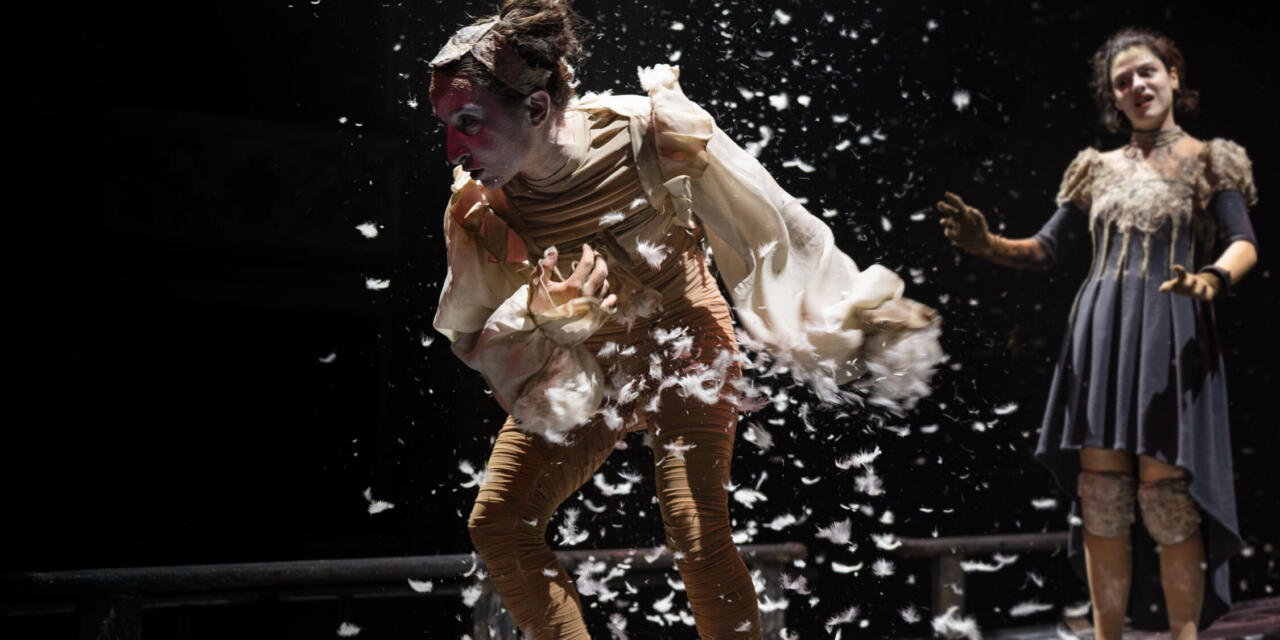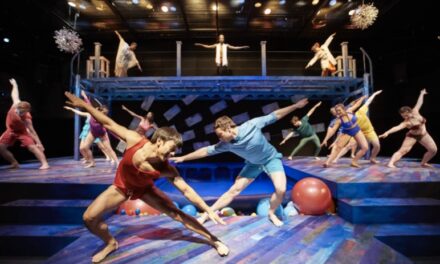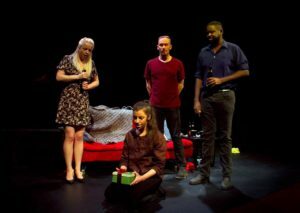Naples. Last October and November, Naples was traversed by a cultural event that aimed to reassign theatre to its former role as a cultural vector within civil society. This ambitious task may be perceived as taken for granted in a city like Naples which thrives on its theatrical tradition (if we think of the impact that a work by Raffaele Viviani or Eduardo De Filippo could have on its citizens last century). But we had been waiting for a long time that a phenomenon like that could be again possible in our current times, so that theatre could be – as rooted in its ancient origins – a real instrument to gather communities, as well as a mirror for the society to stare at itself and preserve its archive of memories.
Actually, this spirit had been missing for a long time in a city where, week after week, the playbills change so quickly that you do not have time to see a play that the stage for the next one is already being prepared. In this context, the long showing of La Cupa at the Teatro Bellini in Naples over the last two months was intended to deliver a message to the spectator in the first person: there is something in the theatre that absolutely must be seen, because it is part of your heritage, and the theater gives you plenty of time to come and see it. It was with this curiosity that on an October evening I went to see La Cupa at the Teatro Bellini in Naples, which produced it and curated its new staging, after it had already premiered in 2018 at the Teatro San Ferdinando, before the pandemic interrupted its showing and prevented a large potential audience of seeing it.

La Cupa. Photo by Flavia Tartaglia. Courtesy of Teatro Bellini in Naples.
Let’s start with the title. What does the “Cupa” mean? “Cupa” is a term used in central-southern Italy to refer to a narrow and dark road, typical of the countryside, embedded in stones. But the term, in this case, becomes allegory: the “Cupa” is the dark landscape of the soul. It is the story of a family saga that has as its director or rather demiurge Mimmo Borrelli. It is hard to forget this play, not only because it takes the audience back to his own animality, by bringing to the surface the buried secrets hidden for generations in the same familiar legacy. But, indeed, the “Cupa” is not to be forgotten, because it is the rare – and therefore precious – case of a play born in the own language of an artist who has founded a new theatre language through his poetry. Mimmo Borrelli in fact is the author of the verses, songs, and the whole dramaturgy (undeniably inspired by the Tale of The Tales by Giambattista Basile).
On stage, Borrelli uses virulent language as if he were the shaman of a primordial ritual, of a chthonic feast made to invoke other spirits, leading his community of outcasts as the Pied Paper who called the rats to his willing (or as Rothbart that haunted the Swan lake). This harsh language seems to come from the mouth of an archaic genealogy erupted by the Phlegrean Fields, and it shakes as the earth surrounding the unexploded realm of the Volcano makes its dwellers tremble. Although at first, it sounds hermetic, this language – whose metric flow mixes litanies and rhymes – respects a precise linguistic code and has its own lexicon and syntax. It is a language of feelings rocked by violent impulses that throw up prophetic prosodies, erupt in foul language without sweetening the blasphemy towards a God who exposes his children to the risk of sacrifice. A language remaining from unresolved previous lives, ancient idioms of the earth, and the tragedies of our ancestors.
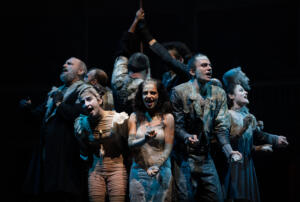
La Cupa. Photo by Flavia Tartaglia. Courtesy of Teatro Bellini in Naples.
We are, in fact, always children of what happened before us, we are the remitted result of an age where our fathers have turned down their role as sons, becoming parents of themselves, and giving up again to be fathers they preferred to be brothers of their children. As Oedipus did. The dark characters on the stage dwell in an Oedipal microcosm infected by a corrupted element that continues to fester in the air, pregnant with crimes never punished. Thirteen actors all appear from the first choral scene advancing as if in a secular ritual, punctuated by the sound of percussions (the typical “tammorre”) and folk songs. It is the feast of St. Anthony, and legend has it that only on this night animals can speak, though revealing the ill fortunes to come soon for the coven.
“Gloomy love cannot be lucky”, the animals utter this omen of damnation, since the darkness of the gloomy cave affects all dwellers so that they are tainted by a capital sin, as if nailed by a cross. All characters, soiled with mud on their clothes, are supposed to fall victim to an immoral stain characterized by crippling horrors. Just as in the Middle Ages bestiaries described the features of each animal, on the contrary in this case the beasts are humanized: a duck turns into a nurse protecting a blind girl, and a pig becomes the jester court of this group of freaks. Once Pier Paolo Pasolini wrote, “we are always doomed by an archetype and all our conflicts have only one origin: blood or shit”, also comparing Naples to the last tribe in the world. In this small tribe, the characters are also folded into their own shadows and the mystery of their genetic core. And the “Cupa,” whose set design turns from a dark mountain into a milky satellite, aims to investigate the boundary that distinguishes man from animal, when the former loses the way of the rational and abuses the carnal bond through crimes of pedophilia, incest, violence, or murder. The shame issued by these crimes chained the characters to the epic of the cave, enlightened by a moon that pales when the truth of their family relationships comes out.
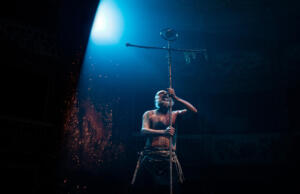
La Cupa. Photo by Flavia Tartaglia. Courtesy of Teatro Bellini in Naples.
So when the innocence of a virgin soul succumbs to the perversion of the diseased germ and the possibility of redemption fails in a descent into the underworld, the misdeeds buried in stone crumble and become dust. Hence this dust left by Mimmo Borrelli is about to blow a new breeze on the curtain of the Italian theatre. La Cupa is the ashes left over the wickedness grieving people, it is rubble from an intestine war among its children, it is the pain of mourning that makes orphans. And, we spectators of the real abomination, we must struggle against inhuman atrocities, and start to water – such as the protagonist who, forgiven by his son, becomes a tree – the seed of beauty that can make our lives breathe.
La Cupa is the story of a palingenesis, or – quoting Anna Akhmatova’s verse – the story of the death of a coarse and brutal world that finally perishes to give its earthly witnesses new hope toward a God who has not saved us.
This post was written by the author in their personal capacity.The opinions expressed in this article are the author’s own and do not reflect the view of The Theatre Times, their staff or collaborators.
This post was written by Sabrina Sabatino.
The views expressed here belong to the author and do not necessarily reflect our views and opinions.

